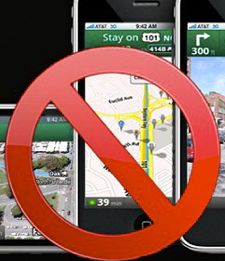 California’s hand-held cell phone law applies only to drivers who are engaged in a call, an appeals court has ruled.
California’s hand-held cell phone law applies only to drivers who are engaged in a call, an appeals court has ruled.
The ruling favored a driver, Steven Spriggs, who was ticketed for checking a map application while stopped in heavy traffic.
“Spriggs contends he did not violate the statute because he was not talking on the telephone,” the Fifth District Court of Appeal said in a ruling published Feb. 27.
“We agree.
“Based on the statute’s language, its legislative history, and subsequent legislative enactments, we conclude that the statute means what it says — it prohibits a driver only from holding a wireless telephone while conversing on it. Consequently, we reverse his conviction.” The ruling was unanimous.
The ruling overturns an April 2013 decision by the Appellate Division of Fresno Superior Court, which found the “plain language” of the cell phone statute and its legislative history indicate any use of a wireless communications device by drivers that is not hands-free is against the law. The case could end up in the state Supreme Court.
The latest ruling appears to be a second erosion of California’s distracted driving laws, following passage of legislation that allowed drivers to use hands-free text messaging technology. The so-called “freedom to communicate act” was signed into law by Gov. Jerry Brown in the summer of 2012. (Hands-free texting generally is allowed under texting laws passed in recent years, following auto-industry lobbying.)
California has a separate texting & driving law and another barring use of handheld communications devices by teenage drivers.
The court cited Section 23123(a):
“A person shall not drive a motor vehicle while using a wireless telephone unless that telephone is specifically designed and configured to allow hands-free listening and talking, and is used in that manner while driving.” The statute does not define the word “using” or any other term contained therein.
The court allowed: “The statute certainly could have been written more clearly.”
The state argued unsuccessfully that the word “using” encompasses all uses of the telephone. The judges said that interpretation renders the “listening and talking” element nonsensical.
Spriggs’ attorney wouldn’t say if he thought the ruling would encourage distracted driving, but noted the Legislature could approve more specific legislation to deal with the issue.
Read the California cell phone ruling


Is this still the law, that I can look at my map or do anything on my phone as long as it is not texting or communicating with another person?
It is nothing wrong if you are sitting at a red light and look at your gps. … if you can chew gum comb your eat sandwich and drive I know dam well you can look at a phone while stopped at a red light.
What if there were no such thing as a map you can read holding in one hand? This ruling is like saying, “it’s ok for a driver to sit at the light, unfold a map, and figure out your directions.” Don’t they understand that while their eyes are looking at the map on their phone, their eyes are NOT on the road, and the driver’s mind is distracted? I think that this was a poor decision, based on a poorly written statute. IMHO
NY law is more specific. It doesn’t use the words listening or talking.
“Under New York State law you cannot use a hand-held mobile telephone or send a text or an email while you drive. If you use a hand-held mobile telephone while you drive (except to call 911 or to contact medical, fire or police personnel about an emergency) or use a device to text or send email, you can receive a traffic ticket and be subject to a fine, points on your record and a surcharge.”
But keep in mind that only holding the phone is banned. Talking on a hands-free phone is okay. In effect, NY State encourages distracted driving since the conversation is the distraction, not holding the phone.